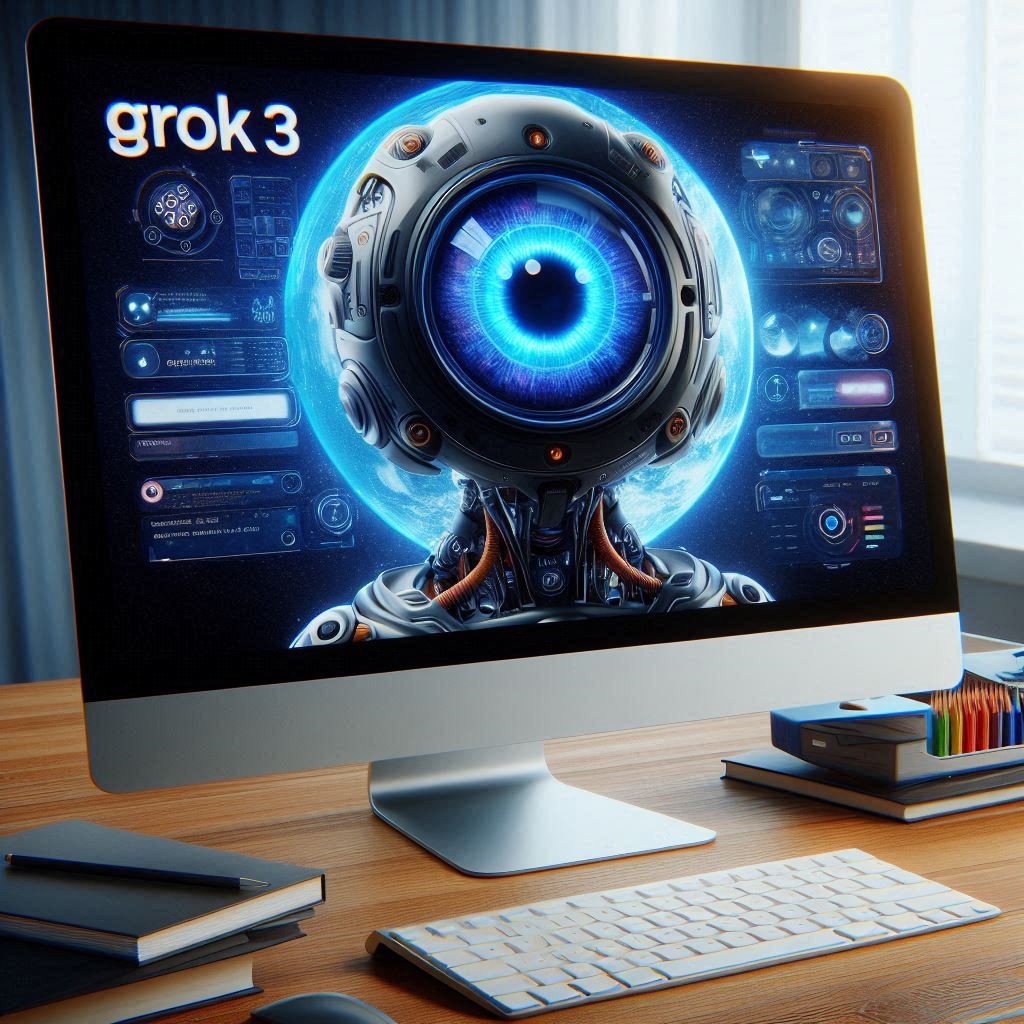Is there a limit to what artificial intelligence can achieve? Every few months, a new breakthrough pushes that boundary.
Elon Musk’s xAI has introduced its latest creation—GROK-3—hailed by many as a potential game-changer.
Whether you’re a tech enthusiast or an HR leader, GROK-3 offers a glimpse into how intelligent automation might transform both AI research and talent management.
In this post, we’ll explore GROK-3’s evolution, major breakthroughs—particularly in “reasoning” technology—and potential applications in HR. We’ll also compare GROK-3 to other leading AI models, noting its reported edge on advanced benchmarks.
From GROK-1 to GROK-3: xAI’s Grand Vision
xAI was founded with a bold aim: accelerate progress toward safe, advanced AI.
After launching GROK-1, xAI drew attention for its innovative language processing. GROK-2 soon followed, improving context awareness and computational efficiency.
Yet these releases were stepping stones toward something more ambitious.
Building GROK-3 required developing expansive, diverse data sets for training, along with iterative refinements in neural network design.
This laid a foundation for a system capable of tackling tasks faster, interpreting subtle linguistic cues, and integrating smoothly with existing platforms.
GROK-3’s Defining Breakthroughs
GROK-3 purports to outperform its predecessor in multiple ways, including:
- Greater Efficiency
Optimized parameter tuning allows GROK-3 to process billions of data points faster and more accurately. - Advanced Reasoning Abilities
Early tests suggest GROK-3 can handle multi-step logic with fewer errors, hinting at improved analytical power. - Seamless Modularity
A design that integrates with various systems makes GROK-3 particularly relevant for HR tech, where many tools must share data fluidly. - Multilingual Range
Expanded language support suits international enterprises that require AI-driven tasks in multiple languages.
New Family Members: GROK-3 Reasoning and GROK-3 Mini Reasoning
Within the GROK-3 family, GROK-3 Reasoning and GROK-3 Mini Reasoning stand out for their ability to “think through” problems. Similar to “reasoning” models like OpenAI’s o3-mini and Chinese AI company DeepSeek’s R1, they attempt to fact-check themselves before finalizing an answer, potentially avoiding pitfalls that often trip up AI systems.
xAI claims that GROK-3 Reasoning surpasses the best version of o3-mini—known as o3-mini-high—on key benchmarks, including the newer mathematics test AIME 2025. Such achievements point to xAI’s focus on robust, error-tolerant performance, particularly in tasks requiring high-level reasoning and numerical accuracy.
Comparing GROK-3 to Other AI Models
GROK-3 enters a competitive field populated by a host of large language models. It could stand out in several ways:
- Efficiency vs. Scale
Many top-tier AIs rely on massive model sizes, leading to high costs. GROK-3’s efficiency gains suggest xAI may have found ways to boost performance without ballooning resource demands. - Multi-Domain Versatility
Some systems excel in specialized tasks like coding or text summarization. GROK-3’s breadth, and especially its reasoning variants, might adapt more fluidly across diverse scenarios. - Built-In Bias Checks
xAI emphasizes broad, multicultural data sets and iterative validation. Whether this truly leads to fewer biased outputs remains to be seen, but the proactive stance is notable. - Interactive Reasoning
Real-time, self-checking logic could position GROK-3—and specifically its Reasoning versions—ahead of models that lack robust fact-checking mechanisms.
Why HR and Talent Acquisition Should Pay Attention
Although AI has broad applications, GROK-3’s relevance to HR and TA is particularly compelling:
- Streamlined Recruitment
Parsing thousands of resumes in minutes could theoretically cut hiring times by 15%. Enhanced reasoning features might also identify hidden candidates overlooked by keyword-based systems. - Personalized Onboarding
By analyzing each new hire’s background and learning style, GROK-3 could deliver tailored onboarding modules, speeding up time-to-productivity. - Real-Time Engagement Insights
GROK-3’s analytics could monitor employee sentiment and performance, flagging issues before they escalate—critical for retention in competitive job markets. - Data-Driven Fairness
With a focus on diverse training data, GROK-3 might reduce bias in candidate screening and employee evaluations, though rigorous oversight will still be essential.
Ethical & Operational Factors
Despite promising features, integrating advanced AI into HR operations requires caution:
- Fairness & Bias: Even advanced reasoning models can display systemic biases if not meticulously trained and audited.
- Transparency: HR practices demand clarity. Employees and candidates should understand how AI-driven evaluations are made.
- Privacy & Regulation: Managing sensitive personnel data calls for robust security measures. Compliance with data protection laws remains non-negotiable.
- User Training: To interpret AI insights effectively, HR teams must undergo training. Misapplication of AI findings can undermine trust and accuracy.
The Road Ahead: GROK-3’s Potential Influence
Whether GROK-3 lives up to its title as the “smartest AI on Earth” will depend on real-world trials and widespread adoption.
If its reasoning capabilities stand firm under pressure, it may pave the way for a new standard of AI-driven solutions—where advanced logic, self-checking, and flexible integration become the norm.
As more organizations experiment with GROK-3, possible outcomes include:
- Elevated HR Practices: Routine administrative tasks might be automated, letting HR teams focus on strategic, people-centric responsibilities.
- Industry-Wide Benchmarks: Competing models could rush to adopt self-checking mechanisms, raising the bar for AI ethics and performance.
- Diverse, Real-Time Applications: Beyond HR, GROK-3’s modular nature may spur innovation in healthcare, finance, and education, where rapid reasoning can unlock new possibilities.
Ready for the Next Frontier?
GROK-3’s emergence reflects the relentless pace of AI evolution. With its focus on reasoning, fact-checking, and modular design, GROK-3 could redefine how businesses approach everything from recruiting top talent to conducting complex data analysis.
While it remains to be seen if it will consistently outshine rivals like o3-mini-high, early benchmarks suggest xAI is determined to push the envelope in both technical excellence and practical impact.
For HR leaders, AI enthusiasts, and onlookers, the question is clear: Are you prepared for an AI system that “thinks through” problems before delivering solutions—and what might that mean for your organization’s future?
Additional Resources
- xAI’s Official Website
- Elon Musk’s Twitter (X)
- xAI’s Official Twitter (X) Account
- MLCommons AI Benchmarks
- OpenAI’s o3-mini Model
- DeepSeek’s R1 Model
- Harvard Business Review on AI-driven Recruitment


